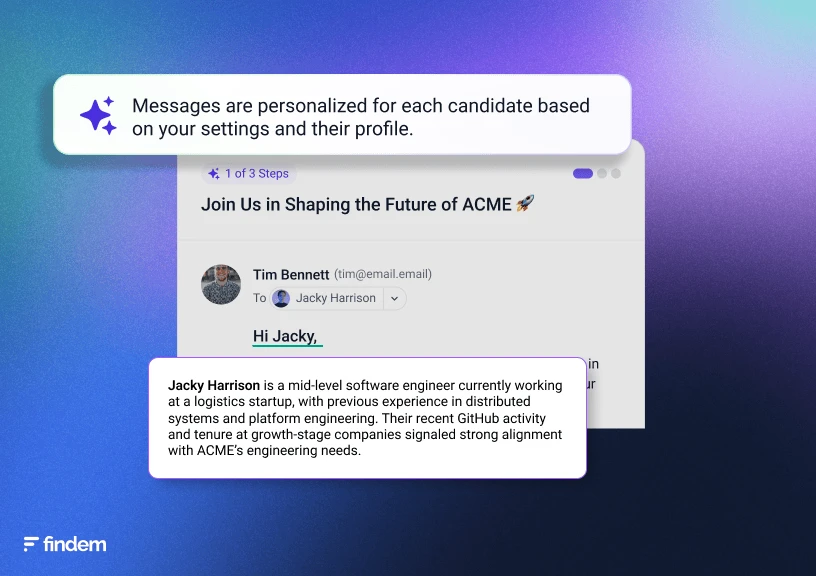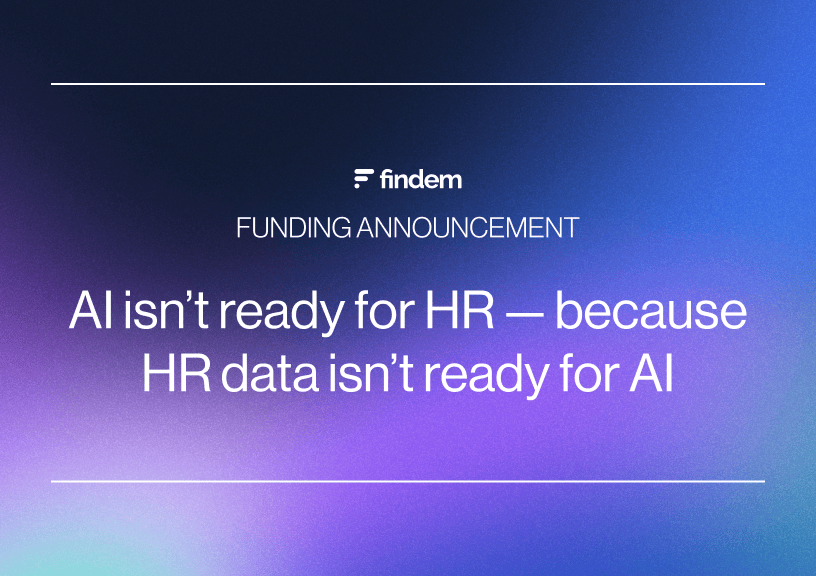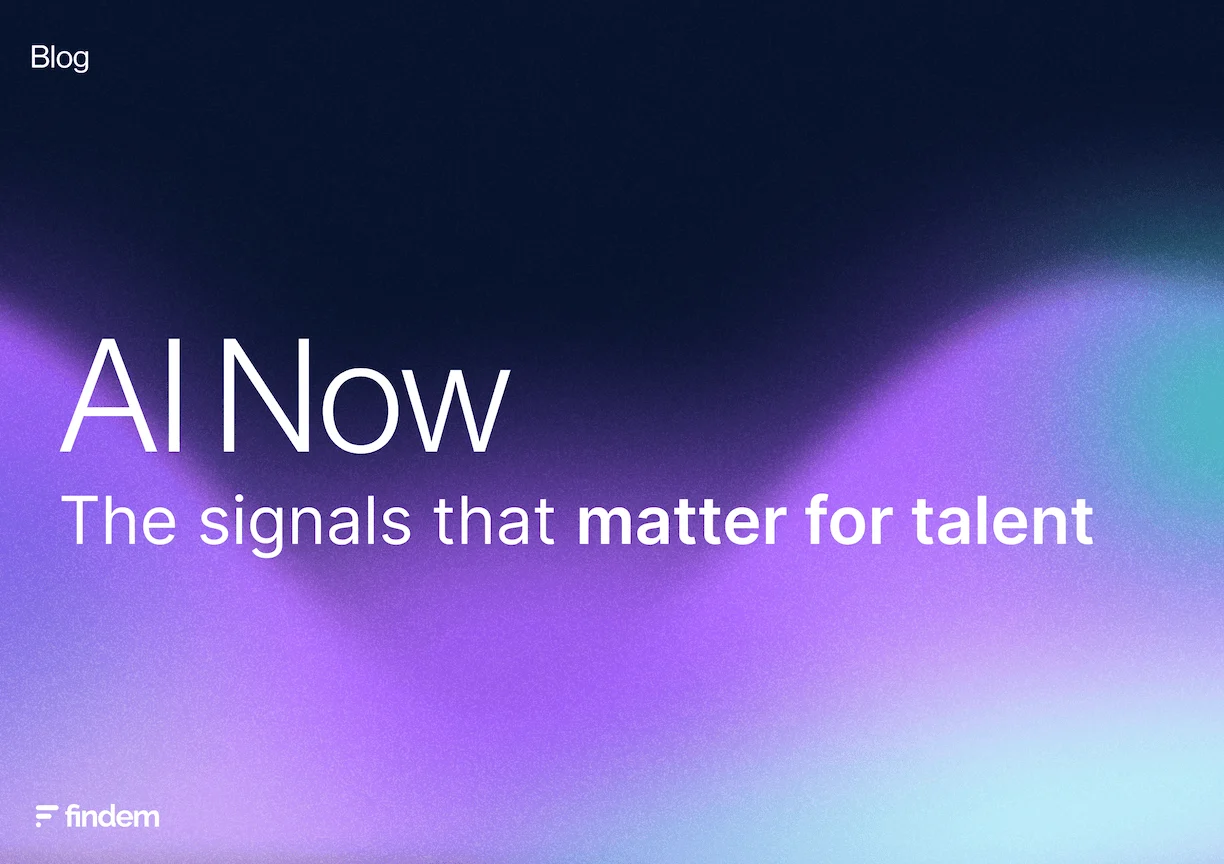.svg)
Beyond vanity metrics: 8 insights to elevate your talent acquisition strategy
.svg)

.svg)
Ballooning tech stacks have provided talent teams of all sizes with an abundance of data, and in some cases, a sense of data overload.
What sourcing channels are producing the best applicants? Where are the bottlenecks in our hiring process? Are certain applicants — like those who did worse on a pre-screen — quitting sooner than others?
These pieces of data can be super valuable to improving both the hiring process and quality of hire. However, as the talent acquisition field continues to evolve, even more business-centric pieces of data will likely become widely available.
“When I think about the type of data hiring managers and recruiters focus on,” says talent acquisition leader Tey Scott, “it’s often the wrong things or the things that don’t matter as much to the business. I see a lot of teams focus on ‘how the sausage is made’ in recruiting.”
Data from Findem’s joint report with Recruiter.com seems to back up Scott’s sentiment, with just 58% of talent leaders ranking themselves as “confident” in the accuracy of their data.
Here’s what industry experts say are some of the data points and decision-making assets that could be of particular interest to a business.
Business-growth data
While at Medallia, Scott used Findem’s market intelligence data to help the company decide where to grow internationally.
For a retailer or restaurant, this could be related to the time it takes to hire and then open a new store or coffee shop. For a semiconductor company, it could be the time it takes to open a new chip making facility; a tech giant, a new headquarters; and so on.
If you remember Amazon’s search for a second headquarters, you know the critical role of labor market data. Some cities such as Cincinnati — though it has a strong talent pool that has attracted many major corporations — didn’t have sufficient skills to match Amazon’s specific needs. Ultimately, Amazon chose to locate HQ2 in the 6-million-person Washington, D.C. area.
The percentage of projects delayed by a lack of talent
This is one of the favorites of San Francisco State University Professor John Sullivan. Instead of focusing on a particular position being open for 84 days, it focuses on the impact or difficulty in hiring the skills needed for the specific role.
For the majority of respondents in the Future of Talent Acquisition and Recruiting 2025 report, volume metrics remain an important piece of the recruiting puzzle. Recruiters said that Offer acceptance rates, Time to source, and Number of open positions were their most important metrics, though Sullivan's performance metrics are more focused on the impact on the business.
Days to begin a new contract
This is similar to the project-delay metric, but expressed more positively. For a consulting company, a government contractor, or similar organization, the ability to bring on the right skills can have a strong influence on whether the company can win a proposal, and if it does get picked, how quickly it can get started.
One company I talked to last year, called Gainwell, is in the business of healthcare technology, securing contracts involving Medicaid, for example. Improvements to its talent acquisition process have given it more agility to start contracts more quickly, as it has greater visibility into who has the skills it needs, such as agile methodologies or cloud technologies.
Your giveaway/takeaway ratio with talent competitors
Another favorite of Sullivan, it touches not just on the value of someone taking your job, but on the loss of institutional knowledge it inflicts on your competitor.
Sullivan says this metric is “one way to show that you think like a CEO.” One simple but effective way to show that ‘you are like them’ is to calculate and widely report your Takeaway-Giveaway Ratio.
And by doing that, you are showing that you are highly competitive, externally focused, and that you realize the close interrelationships between external recruiting and internal retention.
Internal mobility rate
Internal mobility covers everything from promotions to transfers and creating entirely new positions. It can help teams retain top talent, create a more engaged workforce, and prevent turnover as the business scales.
For a handful of surveyed respondents, internal mobility ranked at the top of their priority metric list. Understanding your internal mobility rate can be helpful in seeing if you are providing growth opportunities and are actively recruiting your own employees. If not, your employees can become less engaged and are more likely to leave for new opportunities.
Impact of candidate experience on revenue
One of the most famous examples of this metric being used came from Virgin. The company calculated that it “lost 7,500 customers as a result of direct candidate rejection or poor candidate experience.” It did this by seeing which people stopped being customers within a month after rejection and calculated that the cost was more than $5.5 million in lost revenue.
Contentment and resentment
This is somewhat similar to the above metric about revenue. Kevin Grossman, who runs an annual corporate award for providing the best candidate experience, measures both “candidate contentment” and “candidate resentment.”
Contentment, which runs about 25 percent right now in North America and is declining, represents candidates who are more willing to apply again, refer others (or make purchases if it’s a consumer-based company), and be a brand advocate going forward, even if they didn’t get hired. Resentment, which runs about 14 percent in North America and is rising, measures those candidates who will no longer engage with the brand.
Value of patents or other creations
Baseball teams quantify the value of every individual, so they know who to sign or to consider when making a trade. This is called “Wins Above Replacement.”
While this isn’t an easy metric to quantify for every employee, you can probably gauge the value of hiring and retaining individuals, even if they’re not ballplayers.
Did the person hired participate in the creation of a patent-worthy innovation? Were they on a team that successfully developed a new drug? What would it cost and how much time would it take to recruit a replacement? What would it cost the company if they quit and the job was open for a few months?
Take your talent strategy to the next level with the right data and insights
Every business has a different way of measuring the impact of talent. Those measures aren’t always the same metrics being used in the talent acquisition department. By augmenting your existing metrics with the most valuable insights to your organization, you can get more out of your tech stack.
Watch the replay of our recent panel discussion where we talked about about deriving the most possible value from your tech stack and the metrics that it delivers.










